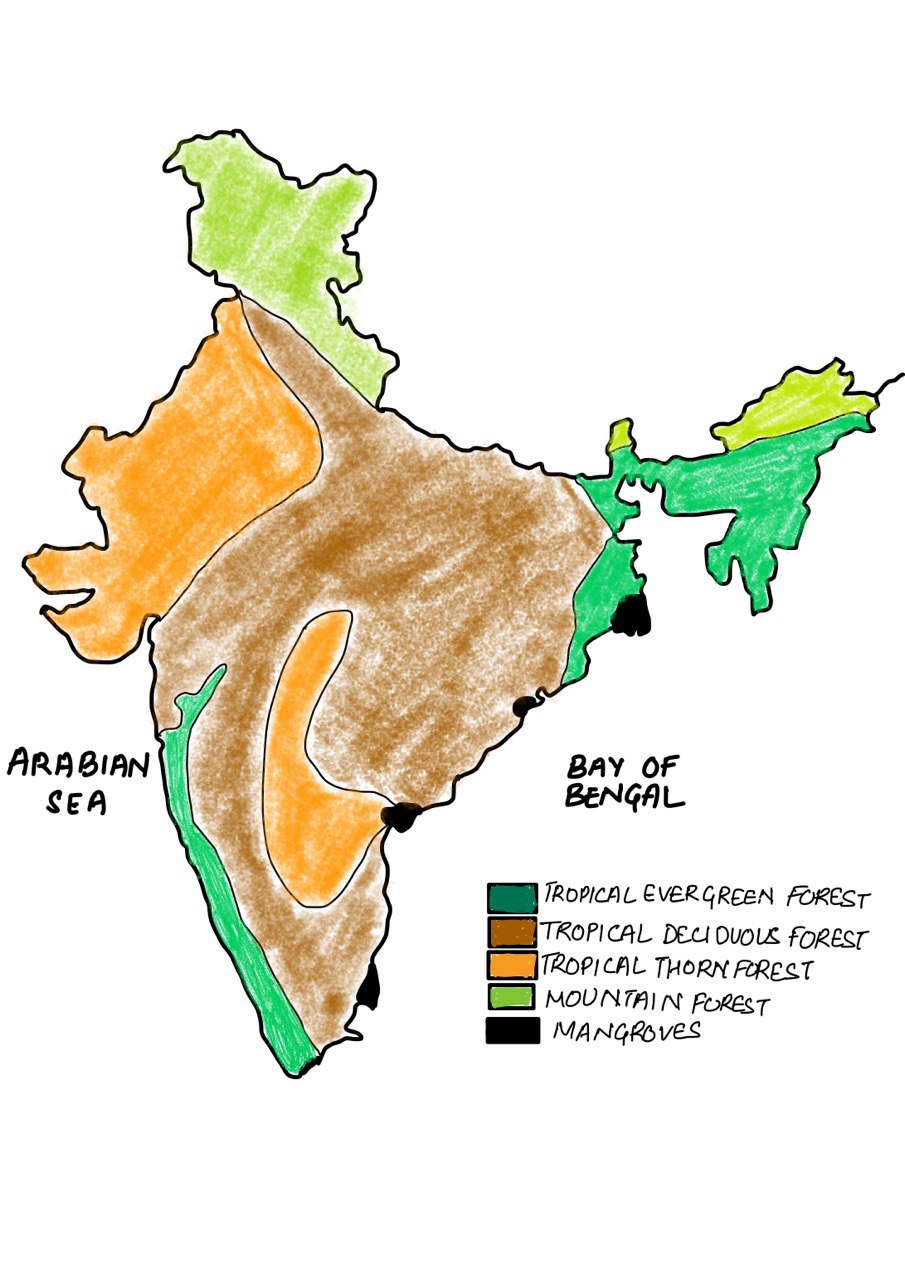Identify and discuss the factors responsible for diversity of natural vegetation in India. Assess the significance of wildlife sanctuaries in rain forests regions of India.
Identify and discuss the factors responsible for diversity of natural vegetation in India. Assess the significance of wildlife sanctuaries in rain forests regions of India.
India's natural vegetation is marked by rich diversity, ranging from alpine meadows of the Himalayas to tropical rainforests of the Western Ghats and Andaman Islands. This diversity results from a unique confluence of geographic, climatic, and edaphic (soil-related) factors.
Factors Responsible for Diversity of Natural Vegetation in India
-
Climatic Variation:
- Temperature: Ranges from sub-zero in Ladakh to 40–45°C in central India.
- Rainfall: Varies from <100 cm in Rajasthan to >1000 cm in Mawsynram.
- Example:
- Tropical evergreen forests in Western Ghats due to >200 cm rainfall;
- Thorn forests in Rajasthan due to <50 cm rainfall.
-
Topography:
- Altitude and slope affect temperature and moisture retention.
- Example:
- Alpine vegetation in Himalayas >3000 m;
- Moist deciduous forests in lower slopes.
-
Soil Type:
- Different soils support different vegetations.
- Example:
- Alluvial soils: Gangetic plains – deciduous forests.
- Black soils: Deccan – scrub and grassland vegetation.
- Laterite soils: Western Ghats – evergreen vegetation.
-
Latitude: The tropical position of India ensures varied photoperiods, influencing plant growth and leaf fall.
-
Human Activities: Agriculture, mining, and deforestation have altered natural vegetation, leading to secondary growth and degraded forests.
Significance of Wildlife Sanctuaries in Rainforest Regions
India’s rainforest regions – notably the Western Ghats, Northeast, and Andaman & Nicobar Islands – are biodiversity hotspots.
-
Preservation of Biodiversity:
- Sanctuaries like Silent Valley (Kerala) and Namdapha (Arunachal Pradesh) protect endemic and endangered species.
- Example: Lion-tailed macaque (Silent Valley) and Hoolock Gibbon (Namdapha).
-
Climate Regulation: Rainforest sanctuaries act as carbon sinks, maintaining microclimates and regulating monsoon patterns.
-
Water Cycle & Soil Conservation: Dense forest cover in sanctuaries aids infiltration, groundwater recharge, and prevents soil erosion in hilly terrain.
-
Livelihood and Sustenance: Forests are home to indigenous communities who depend on non-timber forest produce (NTFP).
- Example: Koragas of Western Ghats and Chakmas of Arunachal.
-
Research and Ecotourism: Sanctuaries promote scientific research, environmental education, and responsible tourism.
-
Cultural and Indigenous Value: Some of these forest are a key features of indegeneous religion and culture in the form of sacred grooves.
- Example: Kavus in Kerala.
India’s natural vegetation is a result of complex interactions between nature and culture. Wildlife sanctuaries in rainforest regions are critical for ecological balance, conservation of endemic species, and sustaining livelihoods. Their protection is essential not only for biodiversity but also for climate resilience in a warming world.
Answer Length
Model answers may exceed the word limit for better clarity and depth. Use them as a guide, but always frame your final answer within the exam’s prescribed limit.
In just 60 sec
Evaluate your handwritten answer
- Get detailed feedback
- Model Answer after evaluation
Model Answers by Subject
Crack UPSC with your
Personal AI Mentor
An AI-powered ecosystem to learn, practice, and evaluate with discipline

